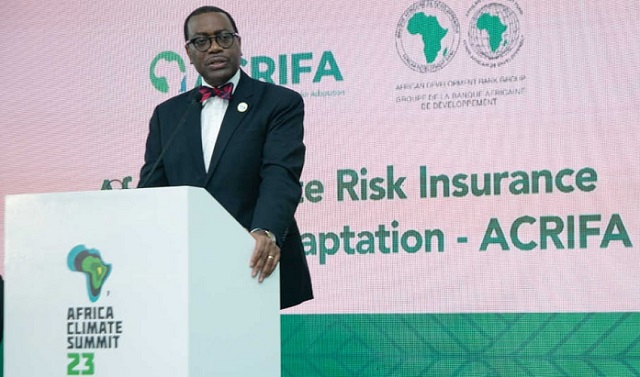
AfDB shows innovative financing tools it should focus on for green growth cash
Kampala, Uganda | RONALD MUSOKE | The Ugandan Government needs to integrate innovative financing tools; including green bonds, carbon markets, debt-for-nature swaps and blended financing if it is to start attracting more private resources urgently needed in Uganda’s response to the climate change crisis.
The African Development Bank’s (AfDB) latest report on Uganda’s climate change financing mechanism shows Uganda has a huge gap in climate financing with very little private sector participation.
The AfDB says the gap, estimated at an average of US$3.4-$4.0 billion per year, could to some extent be bridged through greater private sector mobilisation.
“An efficient and smooth operating business environment is critical to attracting international investors that can drive large mineral projects,” the AfDB says.
It notes that Uganda’s investment environment is becoming more liberalised with free capital markets, easy establishment of business and licensing through one-stop shops.
The Ministry of Finance, Planning and Economic Development says Uganda loses up to 3% of its GDP as a result of climate change.
Therefore, climate finance is important to provide targeted funds for climate adaptation and mitigation and reduction of the impact of climate change on Uganda’s economy.
According to the Africa Economic Outlook, Uganda’s climate financing needs have recently been updated to US$37.4 – $43.6 billion over the period 2020-2030.
This is a significant rise over the needs Uganda committed to in its Nationally Determined Contribution (NDC) made in line with the 2015 Paris Agreement for the same period that were between US$17-28 billion.
Using the new financing needs estimates, the annual requirement is now estimated at US$3.4-US$4.0 billion.
According to its NDC commitment, 85% of financing should be mobilised from international partners and 15% locally from both the government and private sector players.
According to the AfDB, between 2019 and 2020, Uganda mobilised on average US$785 million per year in climate finance, or approximately 21% of its annual needs as assessed by the AfDB.
Most of Uganda’s climate finance comes from international partners as publicly available finance. In order to change this, the government should lay the foundations for investors by identifying attractive projects, says the AfDB country focus report published recently ahead of the 28th UN Conference on Climate Change (COP28) scheduled for November 30-December 12 in Dubai, the United Arab Emirates.
The AfDB says Uganda can tap into its abundant natural capital; renewable and non-renewable, to finance the response to climate change and the transition to a green growth pathway.
The AfDB adds the government could also make it more attractive to establish private equity funds in the country by, for instance, changing the double tax structure.
It says Uganda must build the technical capacity of its experts in the technical and financial structuring of climate projects and improve the business environment by strengthening an incentive-based regulatory, institutional and governance framework.
“Multilateral banks and development finance institutions could support Uganda in this regard,” it says.
The AfDB says a “Green Growth Industrial Development” facility combined with a green industrial fund could be a vehicle to support Uganda’s industrialization aspiration by providing blended finance underpinned by business development services. The facility would aim to drive manufacturing, agro-industrialisation, and construction by providing longer tenures, attractive financing, and market development support.
Key partners would be government, pension funds, multilateral development banks, and international financing institutions.
AfDB’s country focus reports
The AfDB recently launched the country-by-country reports to guide African policymakers in their discussions during the upcoming COP28. Through these reports, the AfDB seeks to reduce the information imbalances that result from generalizing about countries across a very diverse continent.
The document highlights how governments can strengthen macroeconomic performance and outlook, catalyse private sector and natural capital finance, and support green growth initiatives including green bonds, debt for climate swaps, green banks, blended finance, and carbon markets.
The new Country Focus Reports (CFRs) are published under the theme, `Mobilising private sector finance for climate and green growth in Africa’ and are designed to foster policy dialogue on macroeconomic performance and outlook.
Prof Kevin Urama, the Chief Economist and Vice President of the AfDB Group said the reports should help evoke “sound, practical and implementable policies.”
“As countries prepare for COP28, the reports provide each African country with independent, verified analysis and recommendations for evidence-based negotiations during the global conversation on climate finance and green transitions,” Urama said.
The reports contain short, medium, and long-term policies to accelerate African countries’ economic growth and build resilience to shocks. They provide governments and potential investors with up-to-date, accurate data to inform policy and investment decisions.
With climate change identified as one of the most pressing existential threats to Africa’s inclusive growth and sustainable development agenda, this year’s country reports explore opportunities to support the transition to inclusive, strong, and sustainable green growth.
Urama says developing long-term green growth strategies includes development of appropriate regulations and incentives, supporting project preparation and development, and developing more robust capital markets to support easy entry and exit for domestic and global investors.
“It will require greater use of blended finance, the use of de-risking facilities at scale, and the development of platforms that allow the private sector to invest in a portfolio of green projects, rather than individual projects, to diversify and manage risk,” Urama said.
Ferdinand Bakoup, the AfDB Acting Director of Country Economics, said the reports are building upon the African Economic Outlook 2023, which was launched in May, and the subsequent Regional Economic Outlooks launched in July, this year.
“The CFRs’ detailed country-level analysis and policy recommendations will impact policy design and future projects and programmes in African countries,” he said.
Why Private sector finance is urgently needed
Looking at the updated climate financing needs, the government and its international partners cannot source them on their own. For instance, Uganda will need more than US$2.9 billion to fill the current estimated climate financing gap.
On average, over the period, this would amount to 4.6% of GDP. In perspective, the annual average development financing was 6.4% between 2019-2021 and the total national budget was 20-21% of GDP in 2021/22.
That is why the private sector needs to help fill the gap. The total green growth needs are estimated at US$1.8 billion/year of which more than half is expected from the private sector. Getting the private sector to finance just 25% of the needs amounts to US$700 million annually, which is a considerable mobilisation from the current US$26.5 million.
The Uganda Green Growth Strategy identifies several streams of resources to finance its strategy. These include mobilising from the national budget, environmental taxes, certification of sustainable production and trade, green energy investments, green innovation and payments for ecosystem services, and international funding.
Uganda’s vulnerability to climate change
Uganda is vulnerable to climate change and volatile weather events, such as drought and flooding, which are expected to worsen.
Climate change in Uganda is going to bring about warmer weather conditions and more extreme weather events such as volatile rainfall, flooding, landslides, and prolonged dry spells.
In addition to the climate effects, the rapidly growing population will further add to the impacts on the environment and the economy. If these are not addressed through investment in adaptation and mitigation, it is expected, climate change could slow economic growth.
Safeguarding of water resources and replenishment of forests will be a critical part of adapting to climate change. Other areas to safeguard include the large public and private infrastructure projects that the country embarked on this past decade.
These projects must be able to withstand the climate changes to ensure longevity of public assets and avoid wasting taxpayers’ money. Estimates show that the cost of climate inaction is significantly higher over the long term than what is required to adapt infrastructure and the economy to deal with the rising pressures.
By 2025, estimates indicate an annual cost of inaction in the range of US$3.1-5.9 billion, which will rise to US$18-27 billion in 2050, driven by unmet irrigation and biomass demand.
The government of Uganda will in the next 15 years require ‘new and additional’ finances to meet its growing cost of addressing climate change. Due to its dependence on natural resources to meet the country’s development aspirations, Uganda remains very vulnerable to the impacts of climate change.
Positively, the country has put in place an enabling environment to address climate change – the National Climate Change Policy and the Implementation Strategy (2015) and the Nationally Determined Contributions (NDCs), among others.
“Over 70% of Ugandans depend heavily on micro, small, and medium enterprises (MSMEs) for employment, and these generally have less capacity to withstand financial shocks,” Patricia Ojangole, the Managing Director said recently during the launch of a Shs 50 billion Climate Finance Facility, a strategic fund that will make available affordable finance that aims to promote climate-smart agriculture, ensure climate resilient infrastructure, and promote low-carbon industries.
“The vulnerability of Uganda’s population requires the urgent need to adapt and maintain future economic growth opportunities by transitioning to a low-carbon (green) economy.”
“This will require massive investments in green technologies. Green finance will be central to providing the flows of capital required. This is primarily driven by the fact that the greenest technologies are characterized by high capital intensity and consequently high upfront financing requirements,” she said.
As a landlocked country, there are critical cost factors that need to be competitive to strengthen Uganda’s overall competitiveness, such as electricity, transport, skilled labour, and financing.
In its recognition of the need to address the impact of climate change, the government launched a climate change financing framework in 2021 showing a clear roadmap for mobilising and managing climate finance in Uganda.
It also established a Climate Finance Unit in the Ministry of Finance to enhance the mobilisation of climate finance resources.
“It outlines a number of key priority areas for climate funding, including building climate resilient infrastructure and also promoting low-carbon development in order to reduce national greenhouse gas emissions by 24% by 2030,” Ramathan Ggoobi, Uganda’s Secretary to the Treasury said during the launch of the local climate finance facility in April, this year.
Ggoobi said resources raised by the Climate Finance Unit are meant to improve, among other things, supporting the development of climate-resilient processes, especially in agriculture, mining, energy, forestry, fisheries, tourism, manufacturing, rebuilding ecosystems, among others, as well as promoting renewable energy development and improving water management practices.
Ggoobi’s revelations show that the government knows the priority areas for funding in response to the climate change crisis, however, what is required next is incentivising the private sector to provide the required resources.
 The Independent Uganda: You get the Truth we Pay the Price
The Independent Uganda: You get the Truth we Pay the Price



